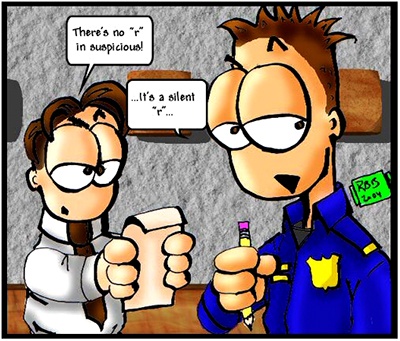by Dawn Kennedy.png)

Be warned, this is not an article on writing reports. From a law student who just finished an evidence class, this is an article on the legal and ethical duty to write an accurate and thorough report, and a teensy reminder that you may be called to court where your grammar, misspellings, and vague narratives may come back to haunt you two years after the call was documented. As students, all first responders are taught that written run reports are legal records, and can be admitted as evidence in court cases. The authors of said run reports can be called to testify. Run reports also have other uses. In many instances, police, fire, and EMS reports are required as proof of an incident for property and personal injury insurance claims, even if the case never goes to court. Many first responders tend to let report writing “slide” a little as they move from rookie to veteran, since the writing usually occurs after the adrenaline rush and brains can be fried. Therefore, I offer to you a few reminders for run reports.
Reminder Number 1: The report must accurately reflect your perception of events. The opposing attorney will likely ask you, under oath, if what you wrote is true.
Parts of the handwritten report have been supplemented in many agencies with a computerized form, and in some versions, auto-populated real-time data, such as the address of the incident, time of arrival on scene, and time departing the scene. Provided the software and an accurate and reliable clock are correctly synchronized (daylight savings time, anyone?) the integrity of the data is deemed reliable as proof of what time the events took place. It is always a good idea, however, to note and write the time somewhere (I used the back of a gloved hand) to double check the accuracy. Leave no blanks. The fields that are not automated must be filled in by writing, typing, or drop- down menu. There are generally accepted abbreviations and standard fields of information that are typically required, regardless of the agency, and if something is not applicable to your call, please fill it with “N/A.” Also be sure that your fields are not ambiguous. If the field is “time on scene,” is that 0217 or 20 minutes? Seems silly, but attorneys are sharks and often will use any perceived inconsistency to question the integrity of the entire report. But you know this. You watched Law and Order.
For the meat and potatoes of your report, the narrative, make sure you are thorough, accurate, and honest. Five Ws and that stuff. There is a great article from Fire Deputy Chief Frank Viscuso that appeared in Fire Engineering Magazine with a “how-to” for writing the structure fire narrative. A similar article for Law Enforcement, by Amaury Murdago in Police Magazine, can be found here. For EMS providers, Dr. Bryan Bledsoe speaks to the critical importance of EMS run reports for other medical care providers in JEMS.
Finally, ensure your submission is complete and any attachments are included. Make sure you include EKG strips, evidence notations, and the names of all personnel and agencies that responded or were on scene. Read your report one last time and note the total number of pages on the bottom of each document in your submission (i.e., 1 of 2, 2 of 2).
Reminder Number 2: Depending on the evidence rules in your jurisdiction, your documents may be available to “refresh” witness memory during testimony.
Law Enforcement Officers go into court pretty regularly to testify, and understand the importance of reports to recall events. In many places the courts are backed up with cases coming to trial years after an incident. Civil cases can take longer than three years in some jurisdictions. Think back to that call you ran at 2 a.m. on January 14. In 2011. Enough said!
Reminder Number 3: It is never too late to improve your report writing.
One final recommendation is that you take pride of ownership in your written works.
If you have been a little lax on your run reports, make these legal documents a priority. Remember that this is often your only written record of a call, as many responders do not keep another notebook for most incidents. Your written report is also a reflection on your service. While this is not necessarily fair, poorly written reports can be used by attorneys to infer incompetence, or a lack of professionalism, diligence, and attention to detail. If you aren’t a great speller, grab a small pocket dictionary, use spell check software, or find a quick reference guide with common words and abbreviations for your agency type. If grammar is not a strong suit, short sentences that are direct and to the point may prevent many errors and issues. Refer to the articles linked above to strengthen your narrative, and don’t be afraid to take a general writing course to strengthen your skills.
Dawn Kennedy is a former Firefighter/ NREMT- Paramedic, who worked in mostly small to mid-sized communities surrounding Tucson, AZ. She left the field in 1997 and moved to Germany as an Army wife. Upon return to the US a few years later, she felt the cruel hand of “no reciprocity” for Paramedics between certain states. She is the CEO of At the Ready Publications, LLC, because rural first responders needed their own platform to share information and address the unique challenges they face. In her spare time, she is a law student- but has no plans to chase ambulances after passing the bar. Please contact Dawn at dkennedy@atthereadymag.com.








